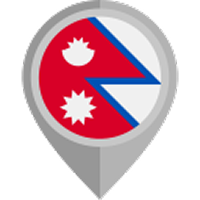Nepal vision | 03/03/2025
The Langtang Gosaikunda Trek is an incredible journey through the natural beauty of the Rasuwa district and the rich cultural heritage of the Tamang community. As one of the closest trekking routes to Kathmandu, it offers a perfect blend of adventure, spirituality, and breathtaking landscapes.
Starting from the muddy trails of Syabrubesi, the trek leads you through lush forests, charming villages, and high-altitude lakes. Along the way, you’ll witness the sacred waters of Gosaikunda, explore the diverse wildlife of Langtang National Park, and experience the unique traditions of the locals. A special highlight is Kyanjin Ri, where the air is filled with the sweet aroma of freshly made cheese.
The trek also rewards you with spectacular mountain views. Peaks like Manaslu, Shishapangma, Langtang Lirung, Annapurna, Dorje Lakpa, Kyunga Ri, and Langshisha Ri stand tall against the sky, making every step of the journey genuinely unforgettable.
With so much to see and experience, preparing well is key to enjoying this adventure. Whether it's building stamina, packing the right gear, or adjusting to the altitude, we’ve got all the details to help you get ready for the Langtang Gosaikunda Trek. Let’s dive in.
Langtang Gosaikunda Trek: A Journey Through Nature and Culture
The Langtang Gosaikunda Trek is a mesmerizing journey through Nepal's stunning blend of natural and cultural gems. Its immersive experience in the heart of the Langtang valley, the sacred Gosaikunda Lake, and the remote highland of Helambu makes it one of the most diverse and rewarding trekking routes in the country.
The adventure begins with a short scenic drive from Kathmandu to Syabrubesi, the gateway to Langtang. As the trail winds through the lush rhododendron forest, cross raging forest and gradually ascend into the alpine landscapes. Throughout the trail, you pass through the flapping chorten, spinning prayer wheel, yak herding here and there, local people with their friendly demeanor, highlighting the diverse culture and warm hospitality of the region.
Further you move higher you reach the Langtang village rebui;lt after the earthquake and arrive at the Kyanjin Gompa, the remote monastery. The place is where you get a chance to add an extra side trip of the Kyanjin Ri (4,773m) or Cherko Ri (4,984m), which provides stunning panoramic views of the surrounding mountains, including Langtang Lirung (7,234m), which dominates the valley with its majestic presence.
Crossing the charm of the Gosaikunda lake, you reach the highest point, Laurabina La Pass (4,610m), a dramatic mountain pass that offers sweeping views of the Himalayas, before beginning the descent toward the Helambu region. Helambu is known for its Sherpa villages, apple orchards, and spectacular mountain scenery. Thus, descending through Thdepati and Chisapani, yet another stunning sunrise struck the Himlaayas, and we concluded the trek in Sundarijal.
Even after losing its beauty in the 2015 earthquake, it has regained its beauty and now has a lot to offer for the trekkers.
Highlights of the Langtang Gosaikunda Trek
- Trek through diverse and rugged terrain in the breathtaking Langtang region, immersing yourself in its untouched natural beauty.
- Encountered rare and endangered species in Langtang National Park, including the red panda, Himalayan tahr, snow leopard, musk deer, and Himalayan monal (Danphe, Nepal's national bird).
- You can engage in friendly conversations with the warm-hearted Tamang people, visit their ancient monasteries, and gain insight into their rich traditions and Tibetan-influenced culture.
- You can participate in the fascinating process of yak cheese production at Kyanjin Ri, learning age-old techniques from local cheesemakers.
- Marvel at the awe-inspiring views of towering Himalayan peaks, including Langtang Lirung, Manaslu, Shishapangma, Dorje Lakpa, and Annapurna, making every step of the journey unforgettable.

Best Season to Visit Langtang Gosaikunda Trek
To experience the charm and aura of the Langtang Gosaikunda Trek, you have to visit during spring (March to May) and autumn (September to November). There are different reasons for this.
Spring
After the harsh cold weather has passed, nature transforms into a green landscape, and the hilly region recovers with new plant buds and the red and white color of rhododendrons, attracting many trekkers to immerse themselves in the natural beauty.
Alongside the natural beauty, the cultural charm, such as the festivals of Buddha Jayanti and Lhosar, which highlight the customs of the people, will further add to the trail's excitement.
It is a time when the weather is comfortable, the trail is in good condition, and the lengthy walking hours are ideal for trekking. However, the end of the season welcomes the rainy season, which can become an obstruction in your trekking journey. It is advised to book early to avoid the hassle.
Autumn
Spring features clear weather, comfortable temperatures, good trail conditions, and a vibrant atmosphere. It is the best time of year because we are getting away from the rainy season, and nature regains its best form, showing off its beauty. Animals are active, and many diverse flora grow in their beautiful form.
At the same time, the festivals of the local Hindu and Buddhist communities, like Dashian Tihar and Lhosar, further highlight the best parts of the season. It is the peak season for trekking in Nepal in the Langtang region, so it is better to book your trek in the early or end part of the season.
Difficulty Level of Langtang Gosaikunda Trek
Langtang Gosaikunda Trek is a moderate trek according to the fitness level, experience and preparation of the individual. With the one-and-a-half-week trek through the rugged landscape, different factors can influence the Langtang trek difficulty
Altitude
The Langtang Gosaikunda Trek reaches elevations of over 4600 m at Lauribina La Pass. The higher you go, the thinner the air, which increases the risk of altitude sickness. In such a situation, you experience nausea, vomiting, headache, and shortness of breath, indicating altitude sickness.
On solemn occasions, it can cause life-threatening conditions of high-altitude pulmonary edema (HAPE) and high-altitude cerebral edema (HACE). It is better to acclimatize correctly to avoid altitude-related issues. In situation you can take Diamox to reduce the initial symptoms but ins evre case, it is better to get medical help.
It's essential to allow your body time to adjust and take it slow, especially after reaching higher altitudes. Trekkers who have not spent time at similar altitudes may feel fatigued or dizzy, and it’s crucial to listen to your body.
Long Walking Hours and Trail Conditions
The trek involves long walking hours, typically 5 to 7 hours of hiking each day. Some days, the trail is particularly challenging, with steep ascents and rocky paths. The terrain varies from dense forests and river crossings to alpine meadows.
Such terrain causes physical challenges for your body that require a good amount of physical stamina to navigate the steep, uneven paths, which can be physically demanding, especially at higher altitudes where the air is thinner and you may tire more quickly.
Permit Required for the Langtang Gosaikunda Trek
All permit fees are included in your package, and your experienced guide of Nepal Vision Trek will handle the process of obtaining the necessary permits using your passport.
- The TIMS (Trekkers Information Management System) Card costs 2000 Nepali rupees and can only be obtained through registered trekking agencies.
- The Langtang National Park Entry Permit can be acquired either at the Nepal Tourism Board or at the park entrance for 3000 Nepali rupees.
- The Shivapuri Nagarjun National Park Entry Permit costs 1000 Nepali rupees per person.
How Should You Prepare for the Langtang Gosaikunda Trek?
Now comes the time when every trekker should understand the details of preparing for their next adventure in the lap of the Himalayas. Let’s get right in.
Physical Preparation
Since the altitude and terrain will be significant physical challenges, it’s essential to maintain good physical condition. Start by doing light walks and staircase training to get your body moving. As you progress, focus on building endurance through activities like cardio (running, cycling, or hiking) and strength workouts to build muscle for those long walking hours.
Additionally, working on leg strength and core stability will help you manage the steeper sections of the trail. Hiking or walking on uneven terrain is also a great way to prepare for the specific conditions you’ll face during the trek.
Mental Health
Trekking in the Himalayas can be mentally demanding, especially with long hours of walking and the challenges of altitude. It’s essential to focus on mental preparation as well. Practice mindfulness, stay positive, and take time to connect with your surroundings.
Take breaks when needed, and remember that it’s okay to rest. Staying mentally strong and maintaining a positive attitude will make a huge difference in how you handle the physical challenges of the trek.
Packing Essentials
- Clothing: Insulated jacket | Rain jacket | Waterproof pants | Base layers | Gloves | Hat | Fleece jacket | Thermal socks
- Footwear: Trekking boots | Camp shoes
- Trekking Equipment: Trekking poles | Backpack | Sleeping bag | Sleeping pad | Gaiters
- Personal Items: Water bottle | Sunscreen | Sunglasses | First aid kit | Camera | Power bank | Lip balm | Wet wipes | Tissues
- Navigation: Trekking map | Compass | GPS device
- Miscellaneous: Headlamp | Multi-tool | Ziploc bags | Extra batteries | Snacks | Travel lock | Personal hygiene items
Trekking Insurance
It's essential to have trekking insurance when going on a trek like Langtang Gosaikunda. Your insurance should cover emergencies such as the following:
- Evacuations: If you get injured or experience altitude sickness, evacuation might be necessary. Trekking insurance can cover the cost of getting you to the nearest medical facility, either by helicopter or other means.
- Medical emergencies: The insurance should cover any medical treatment you may need during your trek, especially for altitude-related issues or injuries.
- Trip cancellation: In case you need to cancel your trip due to unforeseen circumstances (such as illness or natural disasters), the insurance should cover any non-refundable costs.
To wrap up, the Langtang Gosaikunda Trek is an incredible adventure that takes you through stunning landscapes, diverse terrain, and rich cultural experiences. With proper preparation, the right gear, and the assurance of trekking insurance, you can embark on this journey with confidence.
If you're ready to take on this beautiful and challenging trek, Nepal Vision Trek can help make your adventure a smooth and unforgettable experience. Contact us today for more details and to plan your Langtang Gosaikunda Trek!
FAQS









